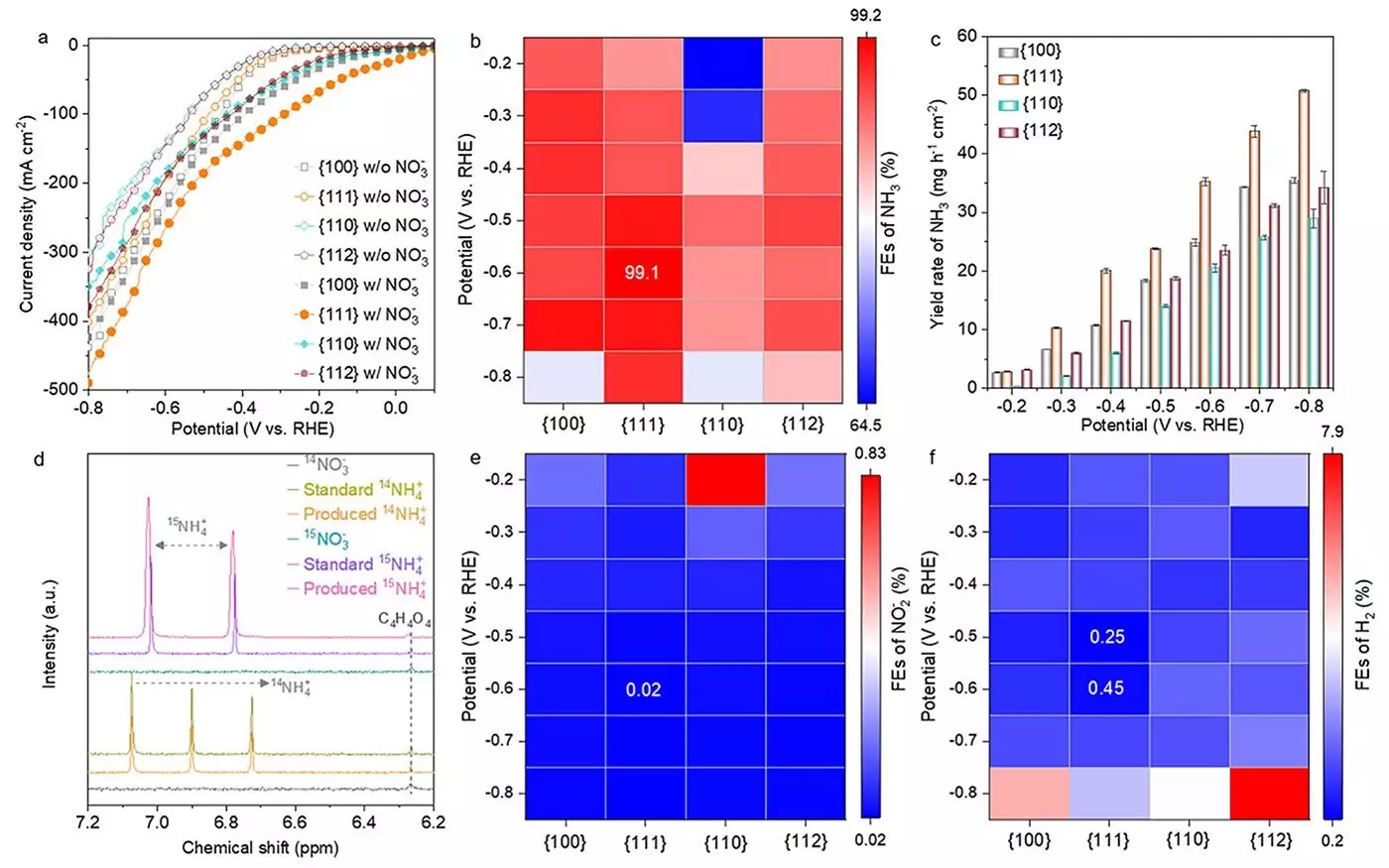The ongoing march toward sustainability in various sectors has found new momentum with recent advancements in electrochemical nitrate reduction reactions (eNO3RR) for producing ammonia. A groundbreaking study, featured in the journal ACS Nano, has spotlighted the potential of spinel cobalt oxides (Co3O4) as catalysts, providing critical insights that could reshape agricultural practices and industrial processes while also addressing pressing environmental concerns.
Ammonia occupies a vital role not just in agriculture as a key ingredient in fertilizers, but it is also being recognized for its capabilities as a zero-carbon fuel. With energy density comparable to traditional fossil fuels and the advantage of clean combustion by-products, ammonia presents a viable alternative for sustainable energy. Nonetheless, the conventional method of ammonia production, known as the Haber-Bosch process, poses significant challenges; it is energy-intensive and contributes to approximately 1.8% of global CO2 emissions. The pursuit of more sustainable production methods, therefore, is of paramount importance.
The research team behind this recent study has made strides by focusing on Co3O4 nanostructures, meticulously investigating how different crystallographic facets—{100}, {111}, {110}, and {112}—influence their performance in eNO3RR. Their results were remarkable; the {111} facet demonstrated exceptional performance in ammonia production, achieving a stunning Faradaic efficiency of 99.1% and a yield rate of 35.2 mg h-1 cm-2. This exceptional performance stems from unique structural qualities that allow for rapid oxygen vacancy formation and the generation of Co(OH)₂ on the {111} facet.
Insights Into Structural Transformations
A pivotal breakthrough in this research is the understanding of how Co3O4 catalysts evolve during the reaction process. The team documented a transformation pathway wherein the catalyst converts from Co3O4 into a structure characterized by oxygen vacancies, transitioning subsequently to a Co3O4−x-Ov/Co(OH)₂ hybrid, and ultimately stabilizing as Co(OH)₂. This developmental journey was most pronounced on the {111} facet, substantiating its enhanced performance metrics.
Professor Hao Li, the corresponding author of the research, accentuates the significance of these structural changes in understanding catalytic activity. By recognizing these transformation phases, future research can aim to fine-tune catalysts for improved performance, selectivity, and stability.
Environmental Implications and Future Directions
The implications of this breakthrough stretch far beyond the laboratory environment. The eNO3RR method offers a sustainable solution to mitigate nitrate waste while generating valuable ammonia, thus addressing both agricultural requirements and environmental remediation challenges. This dual benefit is crucial as the global community intensifies its focus on sustainable practices to combat climate change.
“We are laying the groundwork for designing advanced catalysts that contribute to a greener future,” says Professor Li. The research team aims to refine the final stages of the catalyst’s transformation, leading to the design of solutions that heighten efficiency and sustainability.
As conversations surrounding carbon neutrality gain momentum, innovations such as these Co3O4 catalysts offer hope. They could be central to cleaner industrial processes, lessening the environmental footprint traditionally associated with ammonia production. By optimizing the electrochemical processes involved, researchers are taking pragmatic steps toward achieving the ambitious goal of carbon neutrality by the 2050s.
The advancements in Co3O4 catalysts and their exceptional performance in eNO3RR signify a crucial leap forward in sustainable energy and agricultural practices. As researchers continue to unravel the complexities of catalyst performance, they illuminate a path toward not only reducing CO2 emissions but also fostering a more sustainable future for generations to come. The engagement of both academic and industrial sectors in this endeavor is essential if we are to realize the potential of these game-changing technologies.

